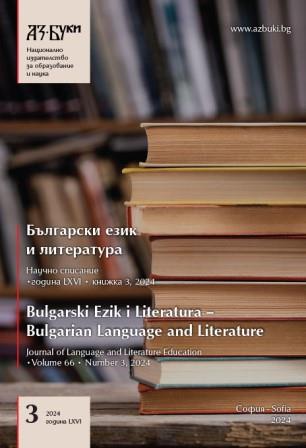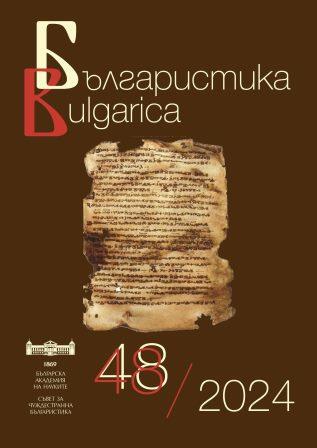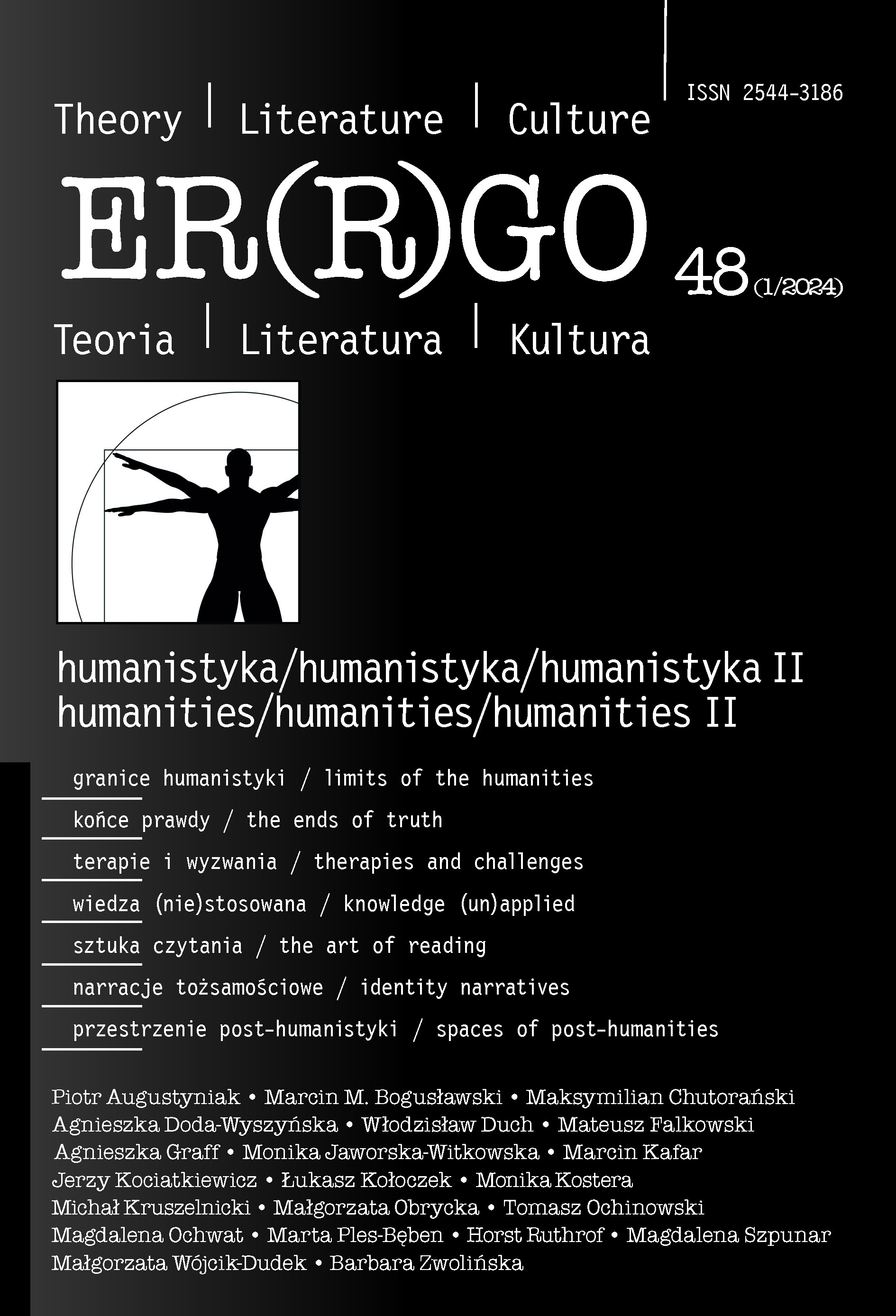
Книги 2014–2015 г.
Selected bibliography in the field of Bulgarian Studies published in 2014-2015
More...We kindly inform you that, as long as the subject affiliation of our 300.000+ articles is in progress, you might get unsufficient or no results on your third level or second level search. In this case, please broaden your search criteria.

Selected bibliography in the field of Bulgarian Studies published in 2014-2015
More...
Selected bibliography in the field of Bulgarian Studies published in 2015-2016
More...
Selected bibliography in the field of Bulgarian Studies published in the current year.
More...
Se estudia el enfoque que se le dio a la lactancia materna en diversos textosde la temprana modernidad: obras médicas de los siglos XV al XVII del Viejo y delNuevo Mundo y crónicas de la conquista espiritual de América. El corpus textualseleccionado lo unifica su marcado providencialismo y su potestad Divina. Se proponeubicar estas obras desde una tradición que toma en cuenta el eclecticismo y eldinamismo en la materialidad de la cultura escrita: siempre se construye un texto a partirde distintas fuentes para conseguir, de modo activo, algo novedoso. Con base en esto, sedestaca que los autores médicos y cirujanos de esta clase de obras crearon unametatextualidad en dos sentidos: uno propio del quehacer del arte médico y otromeramente literario. Finalmente, se propone entender las funciones de los autoresdentro del entramado al que invita su discurso normativo de estilo áspero, desde el cualdefendieron la idea de un paraíso en el Nuevo Mundo ante el cisma que tuvo la Iglesiaen el siglo XVI.
More...
Mefküre Mollova was the first Turkish woman and university professor in Bulgaria, who defended her Ph.D. thesis in the field of turkology and gained international fame for her research. She is the author of over 150 publications in prestigious international journals that continue to be cited today. Mefküre Mollova was among the founders of the Turkish Philology at the University of Sofia. She had worked for only about 7 years (1953-1961), when she and her husband were dismissed from their academic positions on false claims, and the Department was closed. She remained outside the academia until the end of her life.
More...
A brief summary is made of prof. Yanakiev's views on the creation of indexes for different types of scientific publications, changes are noted in these views due to the development of electronics and computer-based text processing, and a comparison is provided with Prof. Yanakiev's practice in the book “Stylistics and language learning”.
More...
Moundbuilding was a preoccupation for the original, Indigenous occupants of the eastern portion of North America for at least six centuries. Approximately two millennia ago, the inhabitants of a broad swath of land primarily east of the Mississippi River and extending from the gulf to the Great Lakes, engaged in the production of conical, geometric, and effigy shaped earthen mound constructs. The efforts, from small to monumental, reflect a precision, often reflecting astronomical phenomenon. The proliferation of mounds and astronomical focus suggest the moundbuilder cultures privileged these activities, they had purpose. Today many remnants of these extraordinary efforts remain despite the systems of erasure that are characteristic of settler colonialism.Two such sites are the focus of this paper on “sacred space”: the Newark Earthworks and Serpent Mound. Both sites are short-listed for UNESCO World Heritage status. The Newark Earthworks as part of a larger package referred to as “The Hopewell Ceremonial Earthworks” and Serpent Mound is a stand-alone nomination. The names of the sites are exemplary of the “logic of elimination,” central to settler colonialism in the Americas (Wolfe). Newark, Hopewell, and Serpent all names given by dominant culture with no relation to the Indigenous architects and builders. They endure and resist, despite a long and complicated history of dominance. While the focus of this paper is on contemporary contestation surrounding the sites, this paper begins with a close description of the sites and offers a brief overview of contact. This historical contextualization serves to demonstrate the ramifications of settler colonialism, which ruptured connections between Indigenous people and this land while simultaneously reinterpreting the sites as distinctly American. This lays a foundation for the web of narratives refashioned and recirculated in today’s contest over World Heritage status. Central to these narratives is ascribing the label of “sacred” to the sites. The vast number of constituents who claim a seat at the table regarding “ownership” and a voice regarding the sites is astounding. These include governmental agencies from the local to global, historical societies, Native peoples, academics, golfers, and small pockets of the public. Into this mix we can include those with religious/spiritual claims such as the Mormons, new-agers, fundamentalist Christians, and contemporary Native tribes. Many of these stakeholders have come together to work toward the coveted World Heritage Status. But, if and when it happens, whose story will dominate, who will make decisions, which voice will be heard?
More...
Kinga Wyskiel’s article concerns the issue of gender in science fiction stories by Julia Nidecka. The following stories have been analysed and interpreted: “Wilki na wyspie” [Wolves on the Island], “Taśmy prawdy” [Tapes of Truth], “Kwiaty w bukiecie” [Flowers in a Bouquet] and “Goniący za słońcem” [Chasing the Sun]. Wyskiel considers two dominant strategies for the representation of femininity in these stories and focuses on Nidecka’s images of the woman scientist and the mutant woman present in them. Wyskiel also points out that gender is an a priori category in Nidecka’s future worlds and that, consequently, the construction of those worlds has been based on the gender matrix.
More...
In this article, Jerzy Stachowicz examines selected literary works the represent the science fiction genre of the interwar period. He focuses on pacifist visions of the future in those works and argues that these scientistic, military, and superpower fantasies have an anti-war potential, and that fantasy literature itself can, to some extent, be regarded as a „pacifist practice”.
More...
In this article, the object of interest is the linguodidactological simulations in the process of learning a foreign language. In the context of the leading modern trends in the field of research in private linguodidactology, an attempt is made to outline the figure of the foreign language teacher as a “methodical screenwriter” and the tasks he performs to optimize the mastery of communicative competence through the perspective of linguodidactology simulations. The methodology used is analysis of sources, observation of positive practices and modeling of techniques for transposition of a linguistic-communicative fragment of reality in the learning process of a foreign language. Based on an analysis of achievements in the field of theory and practice of interactive foreign language learning, guidelines are formulated for the development of various types of simulation activities for mastering the studied language, in which the learner acquires a leading role in the learning process. A model for a widely applicable linguistic didactic simulation in the conditions of active foreign language learning is proposed and the main activities that should be performed to achieve positive results from its application in the learning process are outlined.
More...

Serbocroatistic contributions have been published on the pages of “Ricerche slavistiche” since 1952, when this academic journal of Slavic Studies was founded by Giovanni Maver at the University of Rome (now Sapienza University). Articles and reviews on various Serbocroatistic topics (that is concerning linguistics, literary history, literary criticism, culture) have been appearing in this journal with such a continuity that they can be included among the most frequent ones.
More...
This text explores the potential for updating the phraseological fund of the Bulgarian language in the Bulgarian public discourse and examines the influence of different types of updates on the specifics of the functioning of the given phraseological units in public speech. The most visible updates are those that clearly introduce new elements into the meaning of the original sustained phrase, but at the same time retain the obvious connection to the original language unit. Phraseological units, which are generally distinguished by semantic indivisibility, stability of their lexical composition, invariable structure, imagery, emotionality and expressiveness, are subject to dynamic changes occurring in Bulgarian language in recent years. We direct our interest to stable expressions, in the composition of which a new component appears as a manifestation of lexical dynamics, which replaces an already established one, or an additional element appears in the structure of a phraseology, i.e. our attention will be directed mainly to the so-called lexical updates of the phraseological fund. In the text, we trace the change (structural and semantic) in a number of phraseological units in the Bulgarian language, in which the entry of the lexical component kopeyka is observed. The excerpted material is from two corpora – CLASSLA-web.bg (Bulgarian web) and the corpus of parliamentary speech ParlaMint corpus: https://www.clarin.si/ske/#concordance. The examples extracted from the corpora are relevant for tracking the changes we are interested in in the phraseological fund of the modern Bulgarian language.
More...
From industry to teaching, being competent implies knowing how to do things in a complex, adaptable, and reflective way in a variety of contexts. It involves the integration of knowledge, procedures, attitudes, and values whose mastery and application change throughout life. Besides this idea of being adaptable, we want to add the “just-in-time approach” (JIT approach), which had a boom during the pandemic of COVID-19 and which focused on providing learners with the language skills and knowledge they needed at the precise moment they required to accomplish a specific task or communicate effectively in real-life situations. Unfortunately, it also proved that a generation gap existed between 20-year-old students and their teachers of older generations. Current officer cadets have not lived without mobile phones or the Internet which drastically have changed the way we communicate and had a significant impact on our lives. New technologies made communication more accessible and convenient with beloved ones, colleagues, and the conduct of business operations. Networking was not only advisable but a must and the pandemic proved how useful online teaching was and how well-adapted our cadets were. New technologies made it possible to access the Internet from anywhere, providing instant access to information, entertainment, and services.
More...
Data about scientific events in the field of the humanities in Bulgaria in the first half of 2024.
More...

This article is about philosophy as a path, leading man, a civilised being, to re-establish communication with what Gilles Deleuze calls “primordial nature.” This foundational phenomenon, being the primary reservoir of life energy, underpins the existence of the human civilised world. However, by the same token, this phenomenon, since exempt from conditioning and subject to no restrictions or constraints, can disrupt the functioning of this world. Thus, disengagement from primordial nature is the fundamental purpose of the existence of civilization. Unfortunately, its development over time excessively diminishes that connection, deepening alienation, frustration and aggression in social life. I will undertake to demonstrate that the practice of philosophy can be one of the basic ways of coping with that inevitable civilisational impasse.
More...
This paper approaches the naming word order in Bulgarian dialects from different regions of the country and from Bessarabia. In these dialects, the family name is placed first, then the father’s name follows, and the given name stands at the end. The author supposes that this phenomenon has appeared in the Bulgarian dialects under Greek and Turkic influence.
More...
The paper gives information on a medieval Slavonic translation of the Vita of St. Sabbas the Sanctified. A Middle Bulgarian copy of the translation (manuscript no. 226 of the 14th century, kept in Hilandar Monastery on Mount Athos) is edited with variant readings from two other copies: Hilandar 432 and Dragomirna 706.
More...
The author compares the lexical choices in three translations of Solomon’s Song made from Greek disseminated in medieval Slavonic Cyrillic manuscripts: an early translation of the late 9th or early 10th century and two later ones imbedded in catenae.
More...